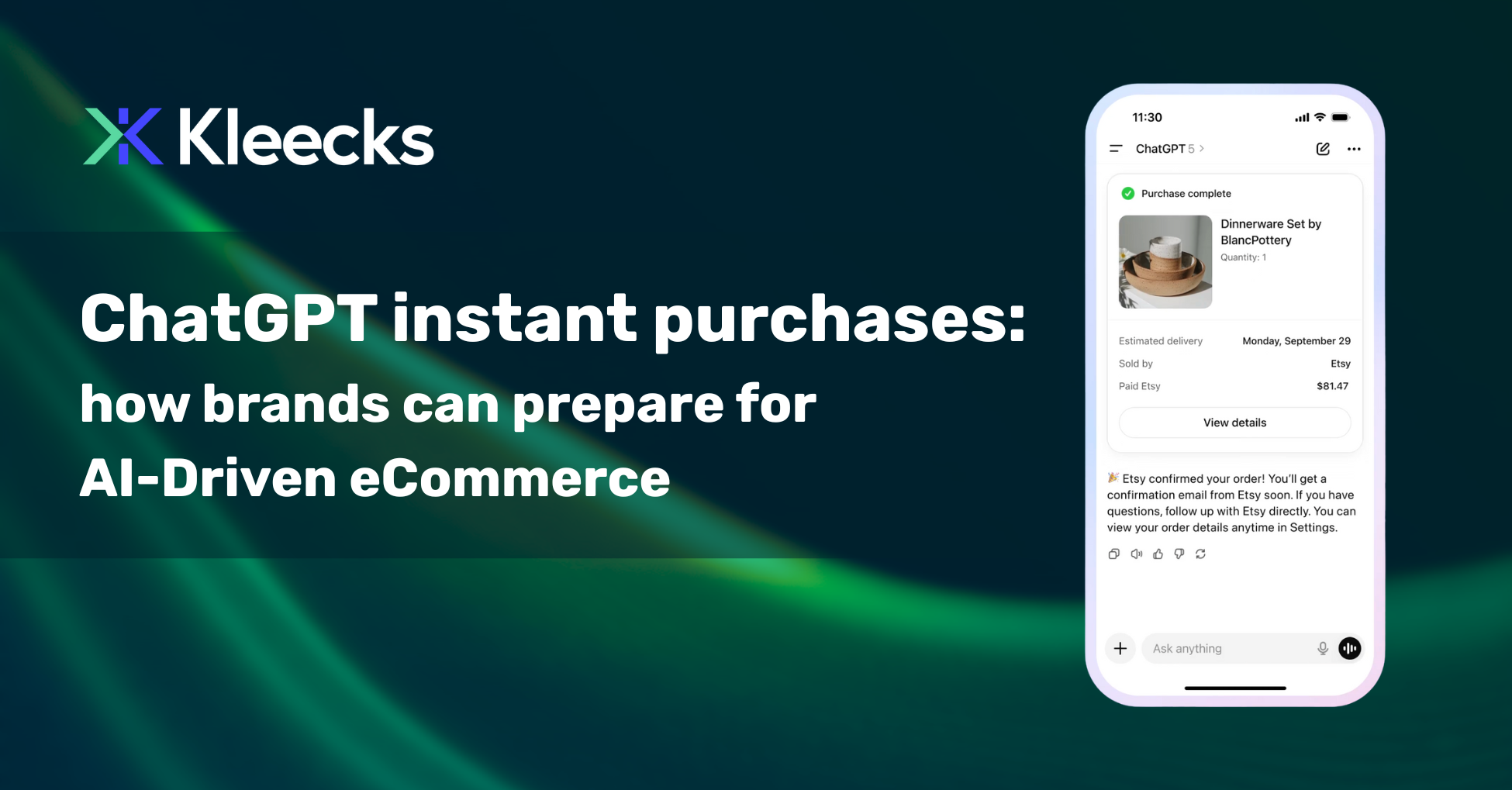OpenAI has just introduced a major update: users can now make instant purchases directly in ChatGPT (Instant Checkout). For e-commerce, this means the customer journey is getting shorter, faster, and more conversational.
While the rollout is limited to the U.S. and single-item purchases, the implications are global. Brands that prepare now will have a competitive edge.
Why it matters
Until today, ChatGPT was mainly an assistant. Now it can close the loop and turn interest into a transaction. This matters because buying happens with fewer clicks and less friction, AI agents become new discovery and purchase touchpoints, and visibility will depend on structured data and integration, not just SEO.
The challenges
This shift creates new risks: customers may buy in chat without visiting your site, brands have less control over the experience, and fewer first-party data points are available for long-term marketing insights.
The opportunities
At the same time, it opens the door to new touchpoints, with products discoverable and purchasable inside AI interactions. The release of the Agentic Commerce Protocol as open source provides a chance to experiment early. And fewer steps to checkout mean higher conversion potential.
What brands should do, right now
To stay competitive, you need both artillery and speed. Here are strategic moves brands should put in motion today.
- Dual-Channel Mindset: own your domain and speak through chat.
Build capabilities so that your product catalog, content, and checkout logic are “chat-friendly.” This means clean data, good product feeds, APIs, structured data.
- Speed & Performance are higher stakes than ever.
The quicker your site, the more you minimize cost of being bypassed. If ChatGPT offers an instant purchase for product X in 2 seconds, but your site load takes 5, many customers will default to the faster option.
- Invest in machine-readable Product Data & Structured Content.
Schema.org, structured metadata, image optimization, alt tags, etc., will matter not just for search rankings but for how your products show up inside AI agents and chat tools.
- Pilot early, learn fast.
Even if the buy-in-chat is U.S.-only or limited in scope, brands should build test projects, monitor performance, and iterate. Early adopters will have playbooks for global rollouts.
- Reduce Go-to-Market cost with Automation & Optimization.
If you can lower internal friction (technical fixes, workflow bottlenecks, slow deployments), you’ll be able to respond faster to AI commerce shifts. This is where platforms like Kleecks come in: maintaining site health, performance, speed, schema & SEO automations all help safeguard readiness.
Real Examples
Many of the strategies needed for in-chat commerce are already part of how Kleecks supports brands today:
In enhancing page speed and Core Web Vitals, performance improvements reduced bounce rates and kept customers engaged.
Through image optimization for search visibility, brands made products easier for both search engines and AI tools to display.
By scaling schema.org optimization, product catalogs became more machine-readable and discoverable.
With Content AI, companies dynamically and scalably produced “answer-ready” content high-quality textual, graphic, and interface assets that enhanced existing pages or built new ones from scratch, supporting discovery and conversion.
And with automated crawlability fixes, thousands of pages were indexed quickly, ensuring visibility across search and AI platforms.
Looking Ahead
In-chat purchases won’t replace websites, but they will change how customers shop. Brands that act now by keeping sites fast, data structured, and operations efficient will be ready to benefit.
At Kleecks, we help brands build that foundation, ensuring performance and scalability so they can adapt quickly as digital commerce evolves.

